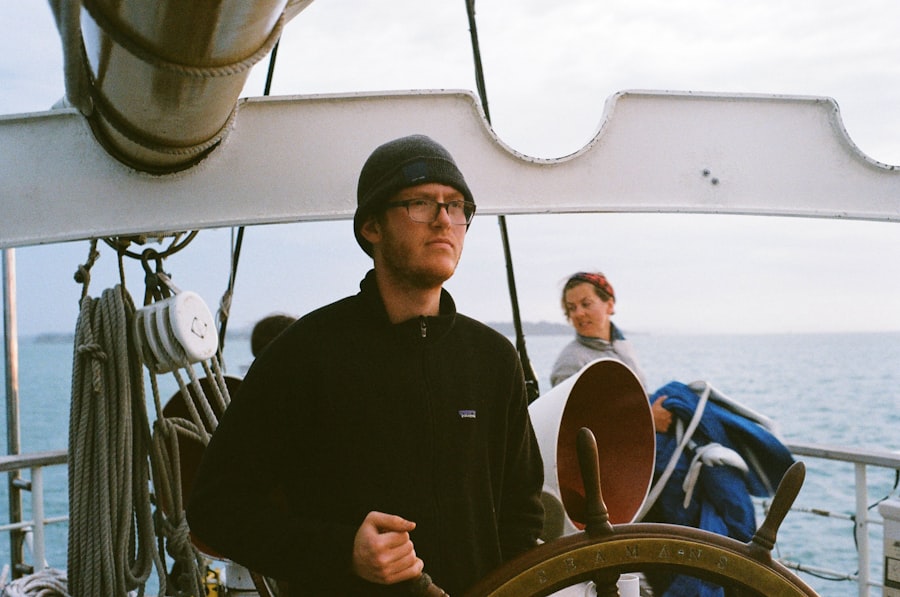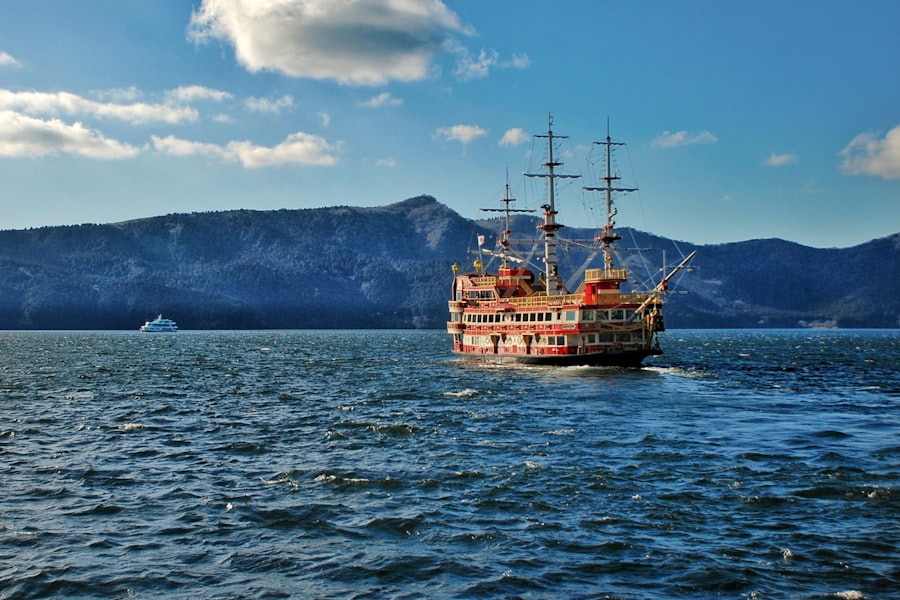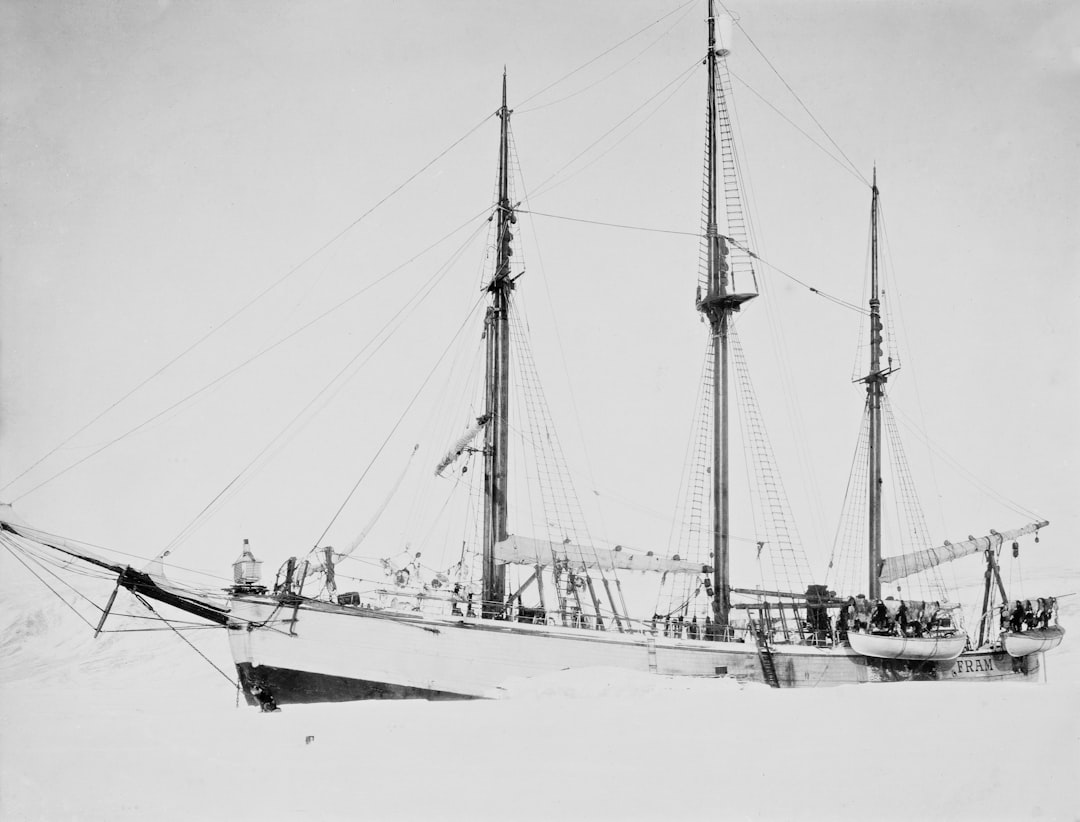In the realm of maritime navigation, the role of a skilled captain cannot be overstated. A captain serves as the linchpin of any vessel, responsible not only for the ship’s operation but also for the safety and well-being of everyone on board. The captain’s expertise is particularly crucial in challenging waters, where unpredictable conditions can arise at any moment.
A seasoned captain possesses a wealth of knowledge, honed through years of experience, which enables them to make informed decisions that can mean the difference between a safe passage and a perilous journey. Moreover, a skilled captain is adept at reading both the sea and the crew. They understand the nuances of human behavior and can motivate their team to perform at their best, even under pressure.
This ability to lead effectively fosters a sense of trust and camaraderie among crew members, which is essential in high-stress situations. In essence, the captain’s leadership is foundational to the overall success of any maritime expedition, particularly in treacherous areas like the Drake Passage.
Key Takeaways
- A skilled captain is crucial for navigating the challenging waters of the Drake Passage.
- Understanding the unique challenges of the Drake Passage is essential for safe navigation.
- Captain Brighton’s experience and expertise make him well-suited for leading voyages through the Drake Passage.
- Weather and sea conditions play a significant role in the safety of navigating the Drake Passage.
- Safety precautions and emergency protocols are vital for ensuring the well-being of crew and passengers during Drake Passage crossings.
Understanding the Challenges of the Drake Passage
The Drake Passage, situated between the southern tip of South America and Antarctica, is notorious for its tumultuous waters and unpredictable weather patterns. This narrow stretch of ocean is often characterized by strong currents, high winds, and large swells, making it one of the most challenging maritime routes in the world. The convergence of the Atlantic and Pacific Oceans creates a unique set of conditions that can change rapidly, posing significant risks to vessels attempting to navigate through.
Navigating the Drake Passage requires not only technical skill but also an intimate understanding of its challenges. The passage is often referred to as “the most dangerous sea in the world,” and for good reason. The combination of rough seas, icebergs, and shifting weather patterns can create a perfect storm for even the most experienced mariners.
As such, it is imperative for captains to be well-prepared and knowledgeable about these challenges to ensure a safe journey across this formidable stretch of water.
Captain Brighton’s Experience and Expertise

Captain Brighton stands out as a figure of authority and expertise in maritime navigation, particularly when it comes to traversing the Drake Passage. With decades of experience under his belt, he has developed an unparalleled understanding of the intricacies involved in navigating these treacherous waters. His journey began at a young age, fueled by a passion for the sea that led him to pursue a career in maritime navigation.
Over the years, he has faced numerous challenges and has emerged as a respected leader in his field. What sets Captain Brighton apart is not just his extensive experience but also his commitment to continuous learning. He regularly engages with new technologies and navigational techniques, ensuring that he remains at the forefront of maritime safety and efficiency.
Captain Brighton’s expertise is a testament to the importance of skilled leadership in ensuring safe passage through one of the world’s most challenging maritime routes.
The Role of Weather and Sea Conditions
| Weather and Sea Conditions | Impact |
|---|---|
| Wind Speed | Affects sailing speed and stability |
| Wave Height | Influences ship stability and passenger comfort |
| Visibility | Affects navigation and safety |
| Temperature | Impacts passenger comfort and crew performance |
Weather and sea conditions play a pivotal role in maritime navigation, especially in regions like the Drake Passage. The unpredictable nature of these elements can significantly impact a vessel’s course and safety. Sudden storms can arise without warning, bringing with them fierce winds and towering waves that can challenge even the most seasoned captain.
Understanding weather patterns and being able to anticipate changes is crucial for successful navigation. In addition to storms, other factors such as fog, ice formations, and temperature fluctuations can complicate navigation efforts. A skilled captain must be able to interpret meteorological data accurately and make real-time decisions based on current conditions.
This requires not only technical knowledge but also an intuitive understanding of how various elements interact within this unique marine environment. Captain Brighton exemplifies this skill set, using his extensive experience to navigate through adverse weather conditions while prioritizing the safety of his crew and passengers.
Safety Precautions and Emergency Protocols
Safety precautions are paramount when navigating challenging waters like the Drake Passage. A comprehensive safety plan must be in place before embarking on any journey through this region. This includes conducting thorough safety drills with the crew, ensuring that all safety equipment is operational, and establishing clear emergency protocols.
Captain Brighton places great emphasis on these measures, understanding that preparedness can mitigate risks significantly. In addition to pre-emptive safety measures, having well-defined emergency protocols is essential for responding effectively to unforeseen circumstances. Whether it involves dealing with medical emergencies or navigating through severe weather conditions, a captain must be equipped with strategies that can be executed swiftly and efficiently.
Captain Brighton’s leadership ensures that his crew is well-trained in these protocols, fostering an environment where everyone knows their roles and responsibilities in case of an emergency.
Navigational Strategies for the Drake Passage

Navigating the Drake Passage requires a combination of traditional seamanship skills and modern technological tools. Captain Brighton employs a variety of navigational strategies tailored specifically for this challenging route. One key aspect is route planning; he meticulously charts courses that take into account prevailing currents, wind patterns, and potential hazards such as icebergs or shallow waters.
In addition to pre-planned routes, Captain Brighton remains flexible during navigation. He understands that conditions can change rapidly in the Drake Passage, necessitating real-time adjustments to ensure safe passage. Utilizing advanced navigational technology such as GPS systems and radar allows him to make informed decisions on-the-fly while keeping his crew informed about any changes in course or strategy.
Communication and Coordination with Crew and Passengers
Effective communication is vital for successful navigation through challenging waters like the Drake Passage. Captain Brighton prioritizes clear communication with both his crew and passengers to ensure everyone is informed about current conditions and any necessary adjustments to their journey. Regular briefings help keep everyone on board aware of potential challenges while fostering a sense of teamwork among crew members.
Coordination among crew members is equally important during navigation. Each crew member plays a specific role in ensuring safe passage, from monitoring equipment to managing passenger safety. Captain Brighton encourages open lines of communication among his team, allowing them to share observations or concerns that may arise during their journey.
This collaborative approach not only enhances safety but also builds trust within the crew, creating an environment where everyone feels empowered to contribute to the vessel’s success.
Captain Brighton’s Leadership and Decision-Making
Captain Brighton’s leadership style is characterized by decisiveness and empathy. He understands that navigating through challenging waters requires not only technical expertise but also strong interpersonal skills. His ability to make quick decisions under pressure is complemented by his commitment to listening to his crew’s input, fostering an environment where collaboration thrives.
When faced with difficult choices—such as altering a course due to sudden weather changes—Captain Brighton relies on both his experience and intuition. He weighs potential risks against benefits carefully before making decisions that impact the safety and comfort of everyone on board. This balanced approach has earned him respect from his crew and passengers alike, as they recognize his dedication to their well-being while navigating one of the world’s most formidable maritime routes.
The Impact of Wildlife and Icebergs on Navigation
The presence of wildlife and icebergs poses unique challenges for vessels navigating through the Drake Passage. Icebergs can be particularly hazardous; their submerged portions are often much larger than what is visible above water, making them difficult to detect until it’s too late. Captain Brighton employs various strategies to mitigate these risks, including utilizing radar technology to identify potential iceberg threats early on.
Wildlife encounters also require careful consideration during navigation. The Drake Passage is home to diverse marine life, including whales and seabirds that may appear unexpectedly near vessels. Captain Brighton emphasizes maintaining a safe distance from wildlife while ensuring that passengers have opportunities for observation without compromising safety.
His respect for marine ecosystems reflects not only his commitment to safe navigation but also his dedication to preserving the natural beauty surrounding this remarkable region.
Tips for Passengers to Navigate the Drake Passage
For passengers embarking on a journey through the Drake Passage, preparation is key to ensuring a smooth experience. Captain Brighton often advises travelers to pack appropriately for varying weather conditions, as temperatures can fluctuate dramatically during transit. Layered clothing is recommended, along with waterproof gear to stay comfortable during potential rain or spray from waves.
Additionally, passengers should familiarize themselves with safety protocols before departure. Understanding emergency procedures can provide peace of mind while navigating through challenging waters. Captain Brighton encourages open communication between passengers and crew members; asking questions or expressing concerns can enhance overall safety during the journey.
By being proactive and informed, passengers can contribute positively to their experience while traversing this remarkable yet formidable maritime route.
Captain Brighton’s Legacy and Contributions to Safe Passage
Captain Brighton’s legacy extends beyond his impressive navigational skills; he has made significant contributions toward enhancing safety standards within maritime travel through challenging waters like the Drake Passage. His commitment to training future generations of mariners ensures that his knowledge will continue to benefit those who follow in his footsteps. Moreover, Captain Brighton advocates for environmental stewardship within maritime practices, emphasizing responsible navigation that respects marine ecosystems while prioritizing passenger safety.
His efforts have inspired many within the industry to adopt similar values, fostering a culture of safety and sustainability among maritime professionals worldwide. As he continues his journey across the seas, Captain Brighton leaves behind a legacy marked by excellence in navigation and an unwavering commitment to safe passage for all who venture into these challenging waters.
In the fascinating world of maritime exploration, the story of Captain Brighton navigating the treacherous Drake Passage stands out as a testament to human courage and determination. For those interested in delving deeper into the challenges and triumphs of such daring voyages, an article on MyGeoQuest provides an insightful perspective. This piece explores the historical significance and the modern-day implications of navigating one of the most dangerous sea routes in the world. To learn more about these incredible maritime adventures, you can read the related article on MyGeoQuest.
WATCH NOW! Drake Passage: Earth’s Deadliest Waters Revealed
FAQs
What is the Drake Passage?
The Drake Passage is the body of water between the southern tip of South America and the northern tip of the Antarctic Peninsula. It is known for its rough seas and challenging sailing conditions.
Who is Captain Brighton?
Captain Brighton is a fictional character in the article “Drake Passage Captain Brighton.” He is portrayed as an experienced and skilled captain who navigates the treacherous waters of the Drake Passage.
What are the sailing conditions like in the Drake Passage?
The Drake Passage is notorious for its strong winds, large waves, and unpredictable weather. Sailing through the passage can be challenging and requires a skilled and experienced captain.
Why is the Drake Passage significant?
The Drake Passage is significant because it is the shortest and most direct route between Antarctica and the rest of the world. It is also an important area for scientific research and exploration.
What are some of the dangers of sailing through the Drake Passage?
Some of the dangers of sailing through the Drake Passage include extreme weather conditions, icebergs, and strong currents. These factors make it a challenging and potentially hazardous area for navigation.
